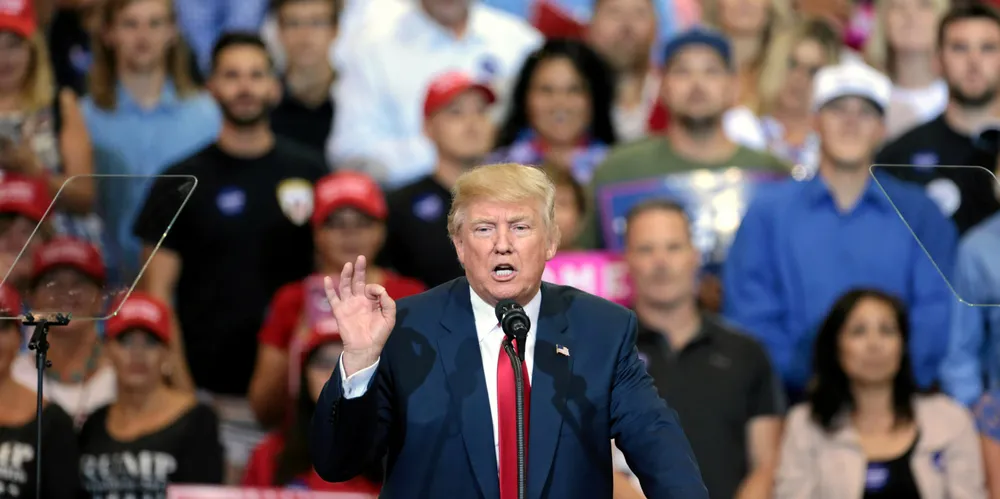Wind smashes global growth record but faces crucial election year as Trump looms
Elections in at least 11 of world's 20 top polluting economies could determine fate of climate and renewables targets, says Global Wind Energy Council

Wind power capacity grew faster than ever last year despite tough economic conditions, the Global Wind Energy Council (GWEC) said, while warning that a slew of upcoming elections in leading economies – including the US – could either boost progress or blow it off course.
Global wind power also passed the 1TW mark last year, with capacity now totalling 1,021GW – up 13% on 2022.
The record growth came despite a challenging macroeconomic environment, marked by rising inflation and cost of capital. The sector also faced supply chain issues stemming from Russia’s invasion of Ukraine and the Red Sea shipping bottlenecks precipitated by the Israel-Gaza conflict.
GWEC said it has now revised the amount of wind power it expects to be brought online in the 2024-30 period up 10% to 1,210GW in light of policy progress in leading economies, “gathering momentum” in offshore wind and “promising growth” in emerging markets.
The body now predicts the world is on track to exceed 2TW before 2030. But it noted this is far short of the 3.5TW the International Renewable Energy Agency estimates is needed to hit climate targets.
To triple renewables by the end of the decade, a target set at the COP28 climate summit in December, and cap global warming to 1.5°C, GWEC said the wind industry must “roughly triple its annual growth” from 117GW to at least 320GW by 2030.
The sector’s ability to ramp up growth will owe much to the outcome of a critical election year for renewables policy, said GWEC, as around two billion people in more than 60 countries are due to go to the polls in national elections.
“Of these countries with elections this year, 11 are among the top 20 emitters globally,” it said, “making this a banner year for the prospects of international climate action.”
Those countries include Germany, India, Indonesia, Iran, Italy, Mexico, Poland, Russia, South Africa, South Korea and the US.
“The results of many of these elections will sway energy transition policy and reset renewable energy ambition – while we are unlikely to see overt U-turns, oppositional swings in office could slow down or speed up progress towards the tripling renewables goal,” said GWEC.
The outcome of the US election could for instance lead to it taking an “isolationist approach to clean technology trade,” said GWEC.
Former President Donald Trump currently leads in polls to incumbent Joe Biden and has pledged to scrap his landmark Inflation Reduction Act if he gets into office – although he would have to go through US Congress to get that done.
While not included on the list, the UK, another top 20 emitter, also faces an election by the end of January 2025 at the very latest.
(Copyright)